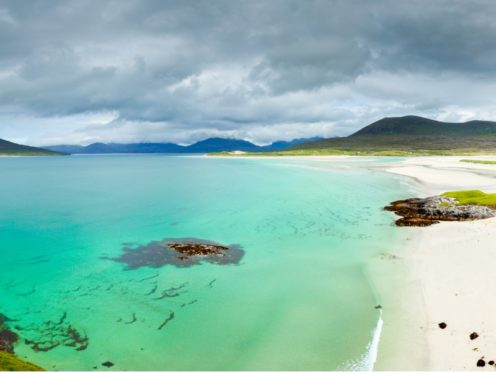Last month, at a special ceremony, the Right Hon Lord Reed of Allermuir was installed as president of the Supreme Court.
He is the first Scottish judge to reach this professional pinnacle.
At the London base of the UK’s highest tribunal, on Parliament Square, details of his outstanding legal career and acclaimed scholarship, were recalled.
There was, however, no mention of Leverburgh Village Hall in the south of Harris. This was the setting for one of the most difficult professional positions in which Lord Reed had ever found himself.
Between October 1994 and June 1995, he represented the Western Isles Council at the public inquiry into the proposed superquarry at Lingerbay on Harris. It would have meant the removal of a good part of the mountain, Roineabhal, to create the largest superquarry in Europe, which would have been clearly visible from space.
There were islanders who, along with many conservationists, always viewed it as an environmental outrage.
But initially many locals saw Redland Aggregates’ £70m project, to extract 600 million tonnes of the mineral anorthosite from the mountain for road-building, as a chance to reverse decades of chronic depopulation.
Harris had been losing its people for generations, and was still doing so. Between 1951 and 1991, the figure (including Scalpay) fell by almost 40%.
A referendum in 1993 found 62.1 % of the islanders supported the project.
The council duly gave consent for the development. In October that year the then-Secretary of State Ian Lang announced a planning inquiry. It was to be the longest in Scottish planning history, sitting for 100 days, with over 100 witnesses, and considered almost 500 written representations.
But the night before the inquiry ended, the islands council performed a complete volte-face.
In May 1995 the Harris Council of Social Service commissioned the Electoral Reform Society to conduct a second poll, which attracted an 82.7 % response, with 67.7% now opposing the development
The council reversed its position, voting by 21 votes to eight to oppose the superquarry.
This left Dr Reed in an impossible position, having spent the previous eight months arguing for the development.
As it was, reporter Gillian Pain closed the inquiry. But if Lord Reed ever writes his autobiography, the chapter on this episode will make interesting reading.
Miss Pain then took four years to complete her report and retired from her job, finishing it as a paid consultant of the Scottish Office. In May 1999, the inquiry report was delivered to the then Labour/Lib Dem Scottish Executive, but took until March 2000 before it finally arrived on the environment minister’s desk.
Four months later, the minister, Sarah Boyack, told the Scottish Parliament that before making a decision, she had decided to refer to SNH the question of whether any part of the quarry site should be proposed as a candidate for a Special Area of Conservation.
Enough was enough, and developers Redland Aggregates went to the Court of Session, where Lord Hardie described the near-10-year delay in producing a decision on the superquarry as a failure of “scandalous proportions”. He said the minister had not only exceeded her powers but acted irrationally when she decided to ask SNH to get involved.
By November 2000 Sarah Boyack had been replaced by the late Sam Galbraith, who almost immediately rejected the planning application. The former neurosurgeon told friends: “When you are guddling about in people’s brains, you’ve no option but to take decisions quickly and move on.”
This came nine and a half years after the planning application was first lodged.
Gillian Pain actually concluded that the 200 direct and indirect jobs created by the quarry would have been worth the undoubted environmental damage to Harris.
It was an exhausting episode for the islanders. Many mainland-based opponents of the quarry had predicted a healthy green future for Harris through alternative developments. But they seemed to disappear back into the woodwork.
Harris’s population continued to decline, dropping by nearly 14% between 1991 and 2011. There has been a small revival in West Harris, but a 13.7% decrease by 2039 has been forecast for all the Western Isles. Most worrying is that it is the under-15 age group which is predicted to fare worst, with a drop of 28%.
The signs are already here. It has just been reported that the number of babies registered in the Outer Hebrides reached a new low of 200 last year, more than 100 down in just 25 years, despite a rise reported earlier in the Uists.
It should be remembered, this demographic gloom comes at a time when tourism in Harris and the other islands has been booming.
That looks set to continue with the Outer Hebrides named as one of the top 19 destinations in the world to visit last year.
Removing a mountain was obviously a pretty drastic idea. There must be another way. Increasing visit numbers alone is not the answer. It is going to take more than motorhomes and Airbnb listings to finally reverse population decline in islands like Harris.
David Ross is a veteran Highland journalist and author of an acclaimed book about his three decades of reporting on the region
